
Podcast: Pythagoras’ Trousers
Juno has just passed a major milestone in its first wide orbit around the giant planet, having passed by its apojove, the furtherest distance to Jupiter (8.1 million km). It will now fall back down the gravity well towards its next close encounter with the planet on August 27th. That completes the first of two […]
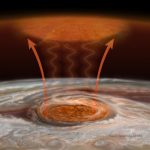
Hot hot hot, above the Great Red Spot
One of the largest remaining questions in understanding the upper atmosphere of Jupiter, the outmost layer of the atmosphere, is: ‘Why is this region so very hot?’. Out where Jupiter orbits the Sun, the sunlight is very faint, and cannot provide enough energy to produce the temperatures that we measure.We call this the ‘energy crisis’. […]
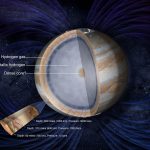
The Birth of Giants
Dr. Leigh Fletcher discusses how Juno could revolutionise our understanding of the origins of Jupiter via gravitational mapping of its internal structure. The presence of Jupiter has had a profound influence on the architecture of our solar system, shaping the conditions that have led to the stable, habitable environment that exist here on Earth. […]
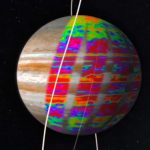
When it Rains…
Water, water, everywhere. Dr. Leigh Fletcher appeared on this month’s episode of BBC Sky at Night to discuss Juno’s goals at Jupiter, and describes the importance of Jupiter’s water in this new post. If our ideas about the formation of giant planets stand up to the observational tests of the Juno […]
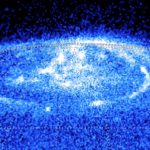
Leicester’s Juno Magnetospheric and Auroral Science
While much of Stan Cowley’s early scientific career concerned theoretical and data analysis studies of the Earth’s outer plasma environment, involvement in work on the gas giant planets began with his participation in the analysis of Ulysses energetic particle and magnetic field data obtained during the 1992 Jupiter flyby. Subsequently this research strand extended into […]

Leicester Atmospheric Science and Juno
In addition to the suite of remote sensing instruments carried aboard the Junospacecraft, the mission coincides with an unprecedented international campaign to scrutinise Jupiter’s dynamic, evolving atmosphere from Earth-based facilities. Juno carries a microwave radiometer capable of sounding below Jupiter’s top-most cloud decks to hundreds of bars of pressure to understand the deep processes underpinning […]
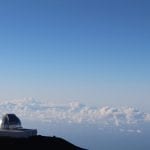
Observing Jupiter’s aurora from the top of a Volcano
As part of the ground based support for the Juno mission, I visited the Mauna Kea Observatories, Hawaii, in February through to the beginning of March this year. I was observing Jupiter’s Northern lights while Juno was speeding its way towards Jupiter. During this time, Juno’s instruments had been switch on and it was busy […]

Observing Jupiter’s auroras with Hubble
Unfortunately, they don’t let you take observing trips to the Hubble Space Telescope; perhaps the only downside to using the veteran observatory. It is a strange feeling, knowing that this world-renowned and famously oversubscribed facility, perhaps best known for its remarkable images of nebulae and galaxies, is, for a fleeting moment in history, doing […]

Hubble captures vivid auroras in Jupiter’s atmosphere
Astronomers are using the NASA/ESA Hubble Space Telescope to study auroras — stunning light shows in a planet’s atmosphere — on the poles of the largest planet in the Solar System, Jupiter. This observation programme is supported by measurements made by NASA’s Juno spacecraft, currently on its way to Jupiter. Jupiter, the largest planet in […]
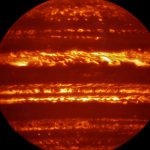
Glowing Jupiter awaits Juno
This article was released by the European Southern Observatory, Royal Astronomical Society and University of Leicester press office on Monday June 27th to coincide with the UK National Astronomy Meeting. Stunning new images and the highest-resolution maps to date of Jupiter at thermal infrared wavelengths give a glowing view of Juno’s target, a week ahead […]

Recent Comments